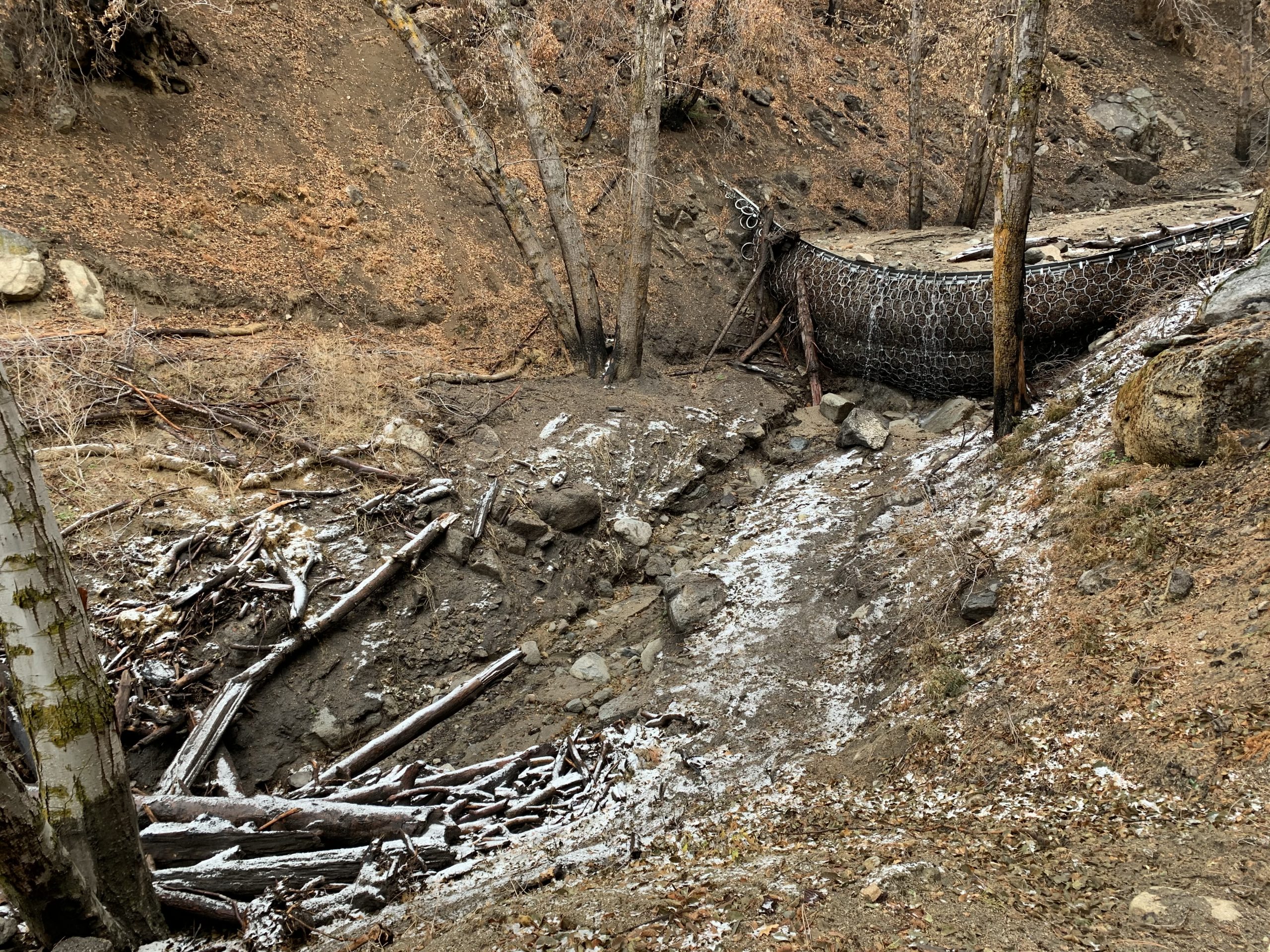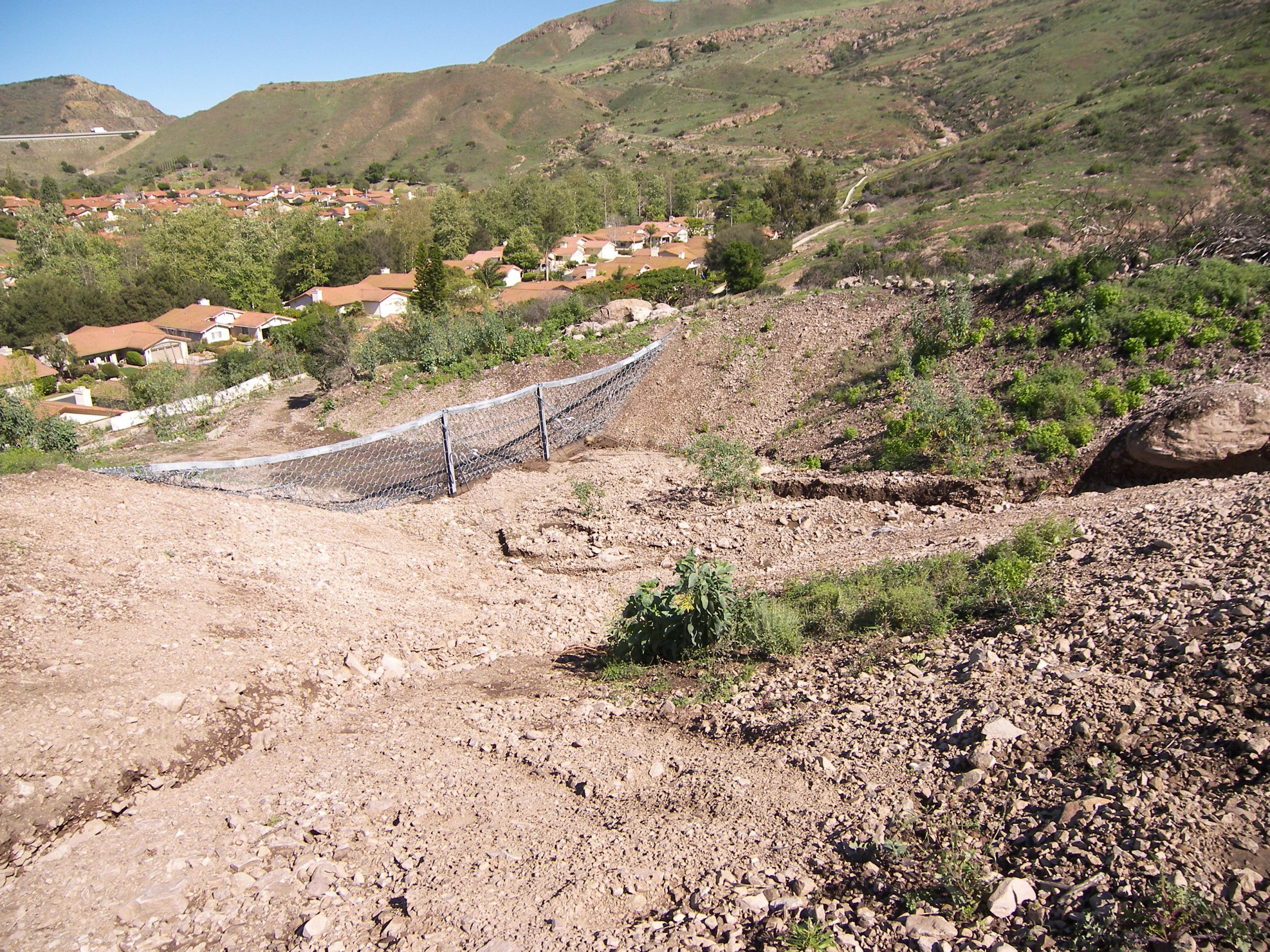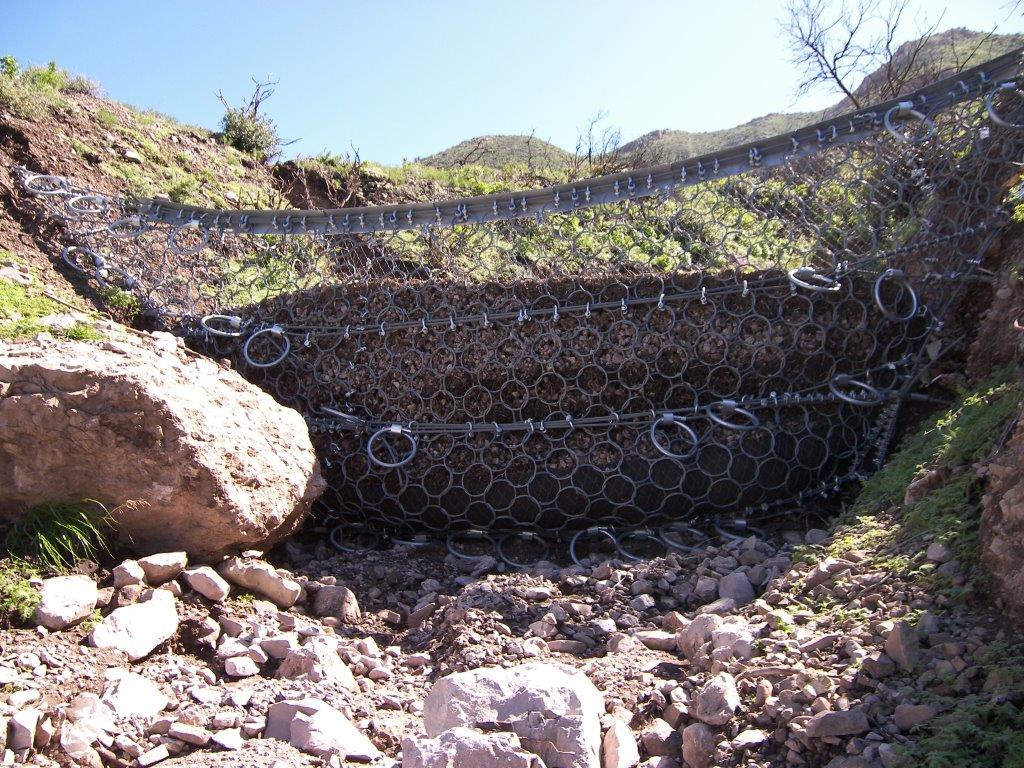The main purpose is to intercept and contain the flowing debris, preventing it from reaching vulnerable areas such as roads, buildings, or infrastructure. These barriers are typically made of strong materials, such as steel or reinforced concrete, that can withstand the impact and force of the debris flow.
These barriers work by redirecting the flow of debris away from the protected area, either by diverting it to a designated channel or by trapping it within a specially designed catchment area. The barriers are strategically placed in areas prone to debris flows, such as steep slopes or canyons, and are often complemented by additional measures, such as drainage systems or erosion control measures, to further enhance their effectiveness.







